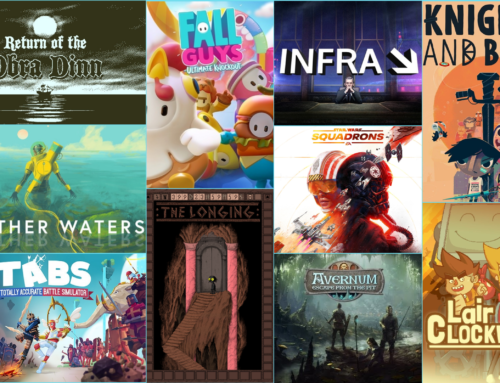Dan Pinchbeck, the British game designer/academic behind The Chinese Room and Dear Esther, was gracious enough to answer a few questions that popped into my head when playing the recently-released remake of Dear Esther. Most of these questions have to do with chages between the remake and the 2008 original (which I wrote a chapter of my thesis on), and so contain spoilers for both of them. The questions, and Pinchbeck’s always thoughtful answers, are below.
AV: The remake of Dear Esther features a somewhat expanded script. What did you hope to add with the new material?
Dan Pinchbeck: Mostly it was a response to some of the ideas and interpretations that came out of the mod community after the original mod – there were really cool ideas that I hadn’t thought of originally and I really wanted to respond to that. So when we thought about expanding, along with adding value to the commercial version, I thought it’d be neat to kind of recognise the original fanbase and try and put some of those ideas back into the mix.
While most of the additions and changes between the remake are subtle, one stood out to me as a significant difference. In the original, the players finds the rusted hulks of cars during exploration of the caves; in the remake, these cars are absent except for a single new scene in which the player is transported to a underwater recreation of what is (presumably) Esther’s fatal crash. How did this change come about?
I knew nothing about the motorway sequence until Rob sent me over the alpha for the caves section, and just sat there with my mouth hanging open. I think it’s the outstanding moment in the game, it’s so spine-chilling and beautiful in equal measure. It adds a dreamlike, hallucinatory aspect that really pushes the caves up a level and it’s a much more creative way of dealing with that than just embedding models into the rockface. That was freaky, but a little tricksy, I think this has a much more organic feel to it.
I didn’t notice any literal “ghost” figure while I played the remake. Was this removed, or did I just somehow miss it? Either way, it’s certainly been made less important.
Oh, they’re there. You should see the ghost hunting thread on the Steam forums. There are several in places I didn’t know about – Rob was really, really busy. What’s very cool about the remake is how subtle lots of these things are. I’m still finding things and I’ve played it a million times now. I have to have words with Rob at some point about how incomplete the list of features he sent me was – but that’s also made the process a lot more interesting for me, and fun.
Unlike the vast majority of titles released on Steam these days, Dear Esther features no achievements. Was there a conscious decision that achievements were incongruous with the experience you wanted the player to have? How do you feel about “achievement culture?”
I personally don’t like achievements for the most part. They’re cool in some games, but all too often they are intrusive and kill the atmosphere. I absolutely fucking hate them in titles like Metro 2033, they just feel like crass intrusions and insulting to the careful crafting of a world designers and artists are going about. There was no way they were going into Esther, it would just be weird. Although there was a funny twitter conversation about what an acheivement in Esther would be: “Hiker: walked slowly for 20 minutes”, “Orthonologist: Saw a Gull”, “Call of Duty: Got so pissed off with the lack of action you threw the monitor out the window and punched the door for ten minutes”. That kind of thing.
You seem to have aimed for a minimal number of commands for the player: there’s no jump key, and crouching happens automatically. Was this just to prevent bunny-hopping and crouch-jumping, or was there another motive?
Kind of. We looked very carefully at that, and it was a hard decision. We essentially did whatever we could to streamline the experience and make the concentration, the focus, on soaking in the game and thinking about it, the emotional response. Everything was geared to that, and stripping back the controls seemed a natural extension.
What are the chief lessons you’ve learned from the development and response to Dear Esther? How have these affected the goals for your current projects (Everyone’s Gone to the Rapture and the secret “gameB“)?
Oh wow, big question. Ummm. Lots of background stuff about production. So the big change for Rapture is we’re really looking at player reward and interactivity, trying to give the world as much depth as we can, adding some kind of motive-driven element to it, as it’s open-world so the chances of players losing interest is higher than Esther. gameB, well, you probably know by now that gameB is Amnesia: A Machine for Pigs, so we’re in full-on survival horror territory. So it’s going to be completely different in most ways to Esther!





Leave A Comment